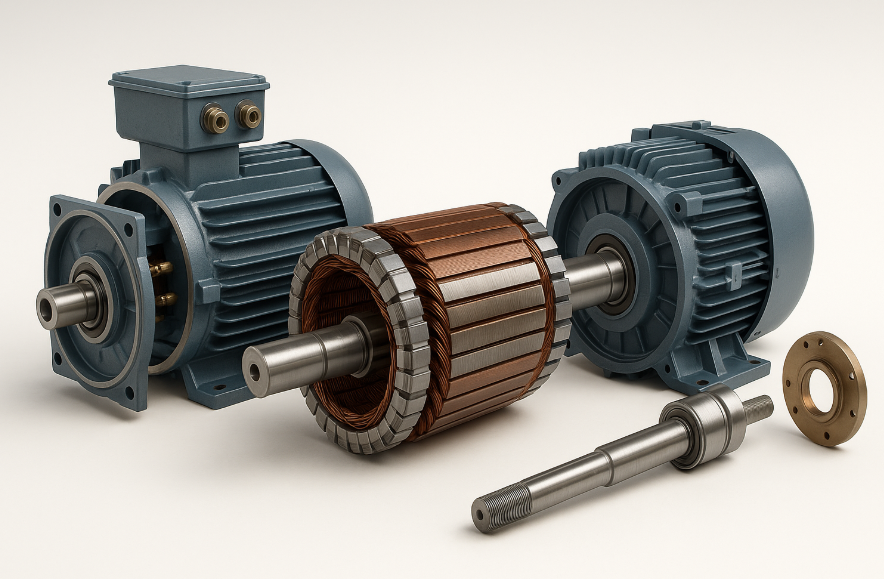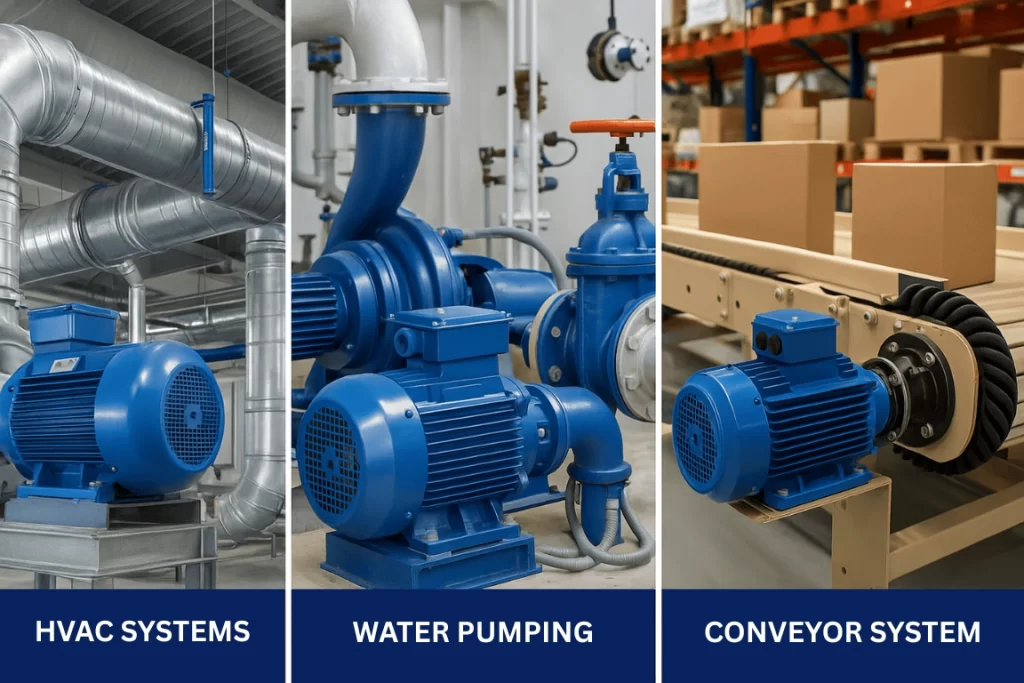In today’s fast-paced industrial world, efficiency, precision, and control are more important than ever. This is exactly where VFD motors, or Variable Frequency Drive motors, step in. These motors play a crucial role in modern machinery and systems by offering enhanced speed control, energy savings, and improved operational flexibility. Let’s dive deeper into what VFD motors are, how they work, and why industries are rapidly adopting them over traditional motors.
Understanding VFD Motors
VFD motors, or variable frequency motors, are electric motors that are controlled by a Variable Frequency Drive. A VFD adjusts the motor’s input frequency and voltage, allowing for precise control over its speed and torque. This means that with a VFD electric motor, you can match the motor speed to the specific demands of your application, instead of running it constantly at full speed.

How Do VFD Motors Work?
The basic function of a Variable Frequency Drive is to convert the fixed-frequency power from your main electrical supply into a variable frequency. Here’s a simple breakdown of the process:
AC to DC Conversion: First, the input AC power is converted into DC.
DC to Variable AC: The VFD then inverts this DC power back into AC power, but now with variable frequency and voltage.
Motor Control: The modified power is fed into the motor, which allows for dynamic speed and torque adjustments.
This mechanism helps make variable speed motors highly energy-efficient and customizable based on load conditions.
Key Benefits of Variable Frequency Motors
1. Energy Efficiency
One of the most significant benefits of a VFD electric motor is reduced energy consumption. Motors typically consume a lot of energy when they run at full speed constantly. VFDs allow you to use only as much energy as needed.
2. Reduced Mechanical Stress
Traditional motors can wear down mechanical parts due to abrupt starts and stops. In contrast, VFD motors offer smooth acceleration and deceleration, reducing stress on the system and extending equipment life.
3. Cost Savings
Less energy usage means lower electricity bills. Plus, you save on maintenance and repair costs due to reduced mechanical wear and tear.
4. Precise Process Control
VFDs give you full control over motor speed and torque, which is especially useful in manufacturing, HVAC systems, and pumping applications.
High Voltage VFD Motors
For applications that require more power, such as mining, oil and gas, or large industrial equipment, high voltage motors are the go-to option. These motors, often operating at 3.3kV, 6.6kV, or even higher, can be paired with VFDs for improved performance.
Advantages of High Voltage Electric Motors with VFDs:
Lower current draw, reducing copper losses.
Smaller conductor sizes, which saves installation costs.
Greater efficiency over long cable runs.
Compatibility with larger mechanical loads.
Whether you’re working with a high voltage DC motor or AC version, pairing it with a VFD boosts its capabilities significantly.
Where Are VFD Motors Used?
VFD motors are incredibly versatile and are used in a wide range of industries and applications, including:
1. HVAC Systems
In heating, ventilation, and air conditioning systems, variable speed motors control airflow efficiently, adjusting according to room temperature and usage.
2. Water and Wastewater Management
Pumping systems benefit immensely from VFDs. Flow rates can be adjusted without the use of mechanical throttles, thereby saving energy and reducing equipment wear.
3. Manufacturing
Precision is key in manufacturing. Variable drive motors provide the exact torque and speed needed for each phase of production.
4. Oil and Gas
Heavy-duty operations often rely on high voltage electric motors combined with VFDs to ensure reliable performance under harsh conditions.
5. Mining
In mining, machinery runs under tough conditions. High voltage VFD motors offer the reliability and ruggedness needed while optimising energy usage.

The Growing Shift Toward VFD Electric Motors
With the increasing need to reduce carbon emissions and improve energy efficiency, industries worldwide are shifting from standard motors to variable frequency motors. VFDs are now an essential component in modern automation systems, thanks to their ability to:
- Save energy
- Reduce CO₂ emissions
- Improve process quality
- Lower operational costs
High Voltage DC Motors and VFD Integration
When we talk about high voltage DC motors, the integration with VFDs works slightly differently compared to AC motors. DC motors often require a DC drive (also known as a variable voltage controller), but many VFD systems are now adaptable to work with both types depending on the setup.
If you’re operating large-scale industrial systems or battery-based storage with high power requirements, high voltage DC motors are an excellent choice — especially when paired with smart control systems.
Choosing the Right VFD Motor
When selecting a VFD motor, keep the following points in mind:
- Voltage rating: Match it to your application (standard or high voltage).
- Application type: Pump, fan, compressor, conveyor, etc.
- Environment: Indoor, outdoor, temperature variations, etc.
- Load characteristics: Constant or variable torque load.
- Efficiency needs: Look for motors with high IE ratings for energy saving.
It’s also wise to partner with experienced VFD motor manufacturers or suppliers who can help you configure the system properly.
Future Trends in Variable Speed Motors
As automation and smart systems grow, VFD motors will continue to evolve. Expect to see more:
Integration with IoT for remote monitoring
Smarter energy-saving algorithms
Miniaturized VFD units for compact spaces
Hybrid motors combining multiple functionalities
With these advancements, variable drive motors will keep becoming more intelligent, efficient, and integral to industrial innovation.
To sum up, VFD motors or variable frequency motors are transforming the way industries operate. Their ability to provide precise control, energy efficiency, and adaptability makes them an essential part of today’s modern machinery.
Whether you’re working with high voltage motors, DC motors, or looking to upgrade to variable speed motors, adopting VFD technology is a step towards smarter and more sustainable industrial operations.
